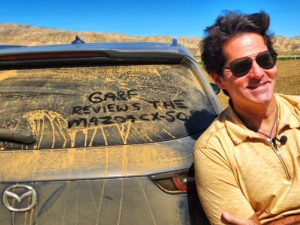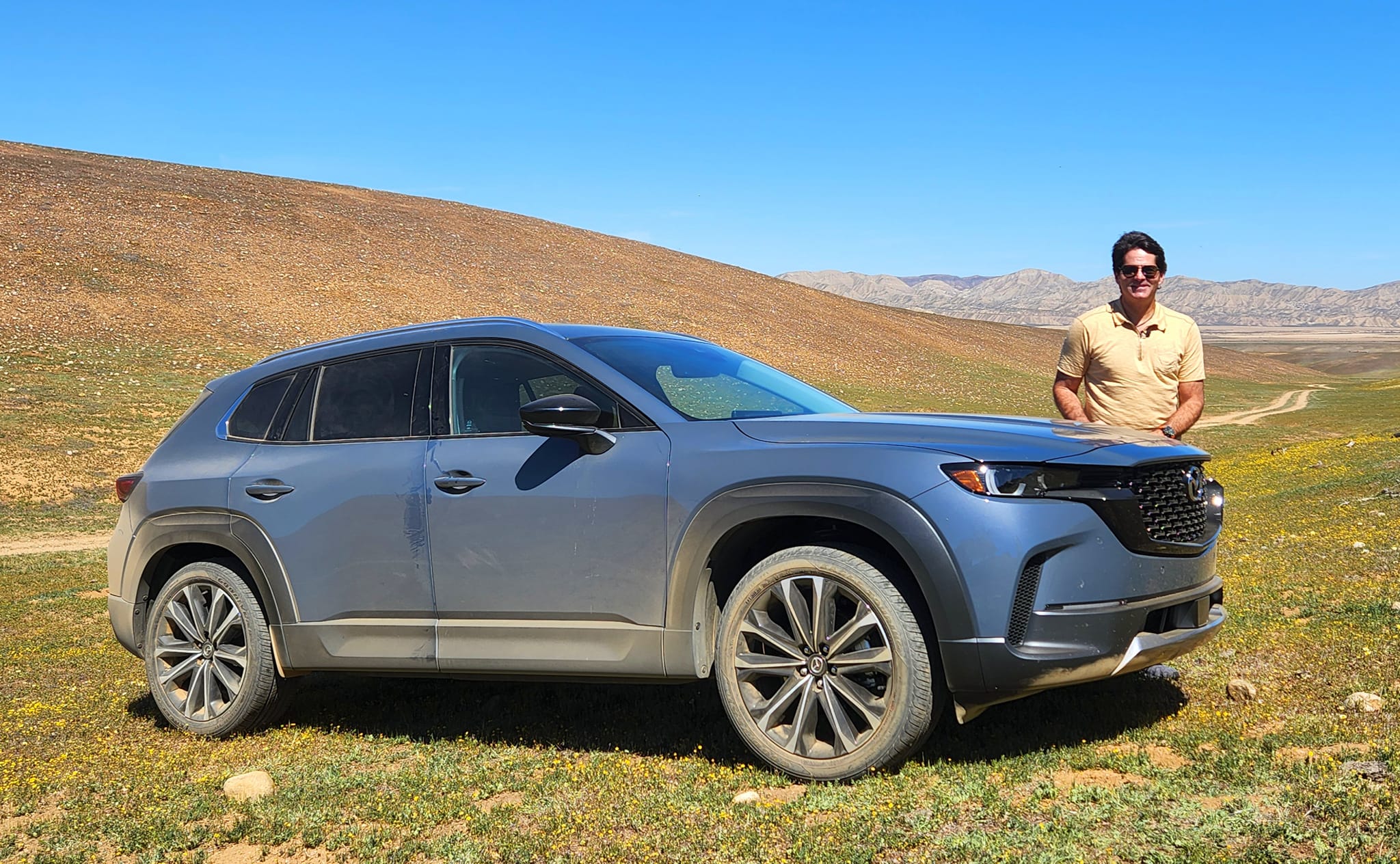Santa Barbara, CA – The last time Mazda invited me to test drive a new vehicle it was for the CX-30, a mid-size SUV. A gaggle of auto journalists gathered in San Diego and we drove the vehicle on a pre-determined route to Palm Springs. I remember many things about the CX-30 but the gorgeous route inland to the desert stuck in my mind. The Mazda team did a wonderful job of choosing winding roads up and down mountains before descending into our hotel check point.
So I was looking forward to seeing what Mazda had in store for us this time on a return trip to California. This time our home base was in glorious Santa Barbara about two hours north of Los Angeles. The goal for journalists and, alas, a few influencers was to check out the all-new CX-50. The new mid-size SUV (sound familiar?) was on full display upon our arrival at The Hotel Californian and this vehicle loomed larger and more rugged than the company’s last SUV I drove here.
I will continue to give the Mazda events team some major props as again they laid out a driving route that enabled the CX-50 to traverse the crowded highways but also the high inclines, steep declines, and twisty roads of Santa Barbara county’s luscious wine region. I must say this was one of the most fun and exhilarating media drives I have ever been on thanks to the roads but also how the CX-50 handled everything thrown at it.
The SUV is the first Mazda to built at the new Mazda Toyota Manufacturing plant in Huntsville, Alabama. A statement from Jeff Guyton, the president and CEO of Mazda North American Operations, the CX-50 was “developed for North America, particularly to support the active and outdoor lifestyles of customers in this region.” And that was indeed the theme that the on-site Mazda team wanted to reiterate. This vehicle is meant to handle some off-road duties for hikers, campers, skiers, and more.

Mazda CX 50 dirt
I’d be remiss if I didn’t remind you that Mazda already produces the CX-5, the company’s most popular model and similar sized crossover. So why keep producing both vehicles that could cut into each other’s sales? Solution: make the CX-50 a bit larger, more aggressive looking and position it towards those previously mentioned outdoorsy type of consumers. Not to mention going after competitive models that already target active people (looking at you, Subaru).
In actuality the CX-50 is closer to the CX-30 than it’s single digit counterpart as it shares a new platform, along with the Mazda3. But compared to the CX-5 it is about 6 1/2” longer bumper-to-bumper and 3” wider. The roofline is a few inches lower and it just looks a bit more mean, probably due to the blacked-out grille and cladding around the wheels.
A longer and wider body means more inside space with more legroom in the second row and more cargo space than the CX-5.
As I began my day-long test drive on a busy highway the CX-50 was in Normal drive mode. Definitely capable with a decent pick me up when I stepped on the gas. But when the traffic died down a bit and those inclines came into sight I used the MI-Drive selector to pop into Sport mode. And that is when my smile began to grow bigger.
The powertrain suddenly felt as if it drank a few pots of coffee. The response to that gas pedal was much peppier. The steering seemed to improve a bit as the crossover hugged the turns as if it didn’t want to let go. I was a race car driver and spent most of the day in Sport mode. Until we came to the off-road track.
Our Mazda hosts wanted to show us the CX-50 can also have low-speed grip and a solid traction-control system controlled by the brakes. I did notice a difference in Off-Road mode as I traversed up and down dirt hills so steep I barely had any forward vision. The steering seemed a bit easier than in Normal mode and the hill decent was simple to manage by hovering on the brake pedal.
I always enjoy when manufacturers have a towing demonstration mostly to see the faces of fellow journalists turn a lighter shade due to the uncomfortable task of towing up to 10,000 pounds for a few minutes. Alas, the CX-50 is not rated for anything near that weight but it seemed all of the test drivers had no problem pulling a 3,500 pound trailer down the highway and dirt roads.
Spending almost a full day in a vehicle can get a bit uncomfortable, especially for a six-foot tall dude like myself, but the inside cabin kept me comfy with supportive seats and easy-to-use controls. The Mazda Connect infotainment comes with a 10.3” center display on most CX-50 trims with actual, physical knobs (I’m a stickler for this). The onboard nav is simple to read and the audio output was crisp when cranked high.

Mazda CX 50 standing
I was a bit confused with the center touchscreen – or is it a touchscreen? When the crossover is in motion the touchscreen functions are disabled unless you are using the wireless Apple CarPlay or Android Auto. Only then you can control things by touch as the phone is mirrored on the center display. Mazda may want to look into making this interface a bit simpler.
Going back to compare this model to the CX-5, the new crossover is about $900 more on the basic trim (2.5 S) at $28,025. A turbo version starts at $37,625 and the Turbo Premium Plus begins at $42,775.
I mentioned Subaru which several journalists called out during this trip due to the similar sales and marketing positioning. The CX-50 is priced very close to the Subaru Outback on most all of the trim levels. Both vehicles are certainly capable of handling on- and off-road duties like the course I handled, though Subaru’s brand has long been associated with more rugged and adventurous automobiles.
But that’s one big reason Mazda is now cranking out the CX-50…with its sights set on that market segment. Maybe one day the CX-5 will be folded into the same line but for now there is a compelling reason to make and sell both models. If you can even find them on dealership floors.

